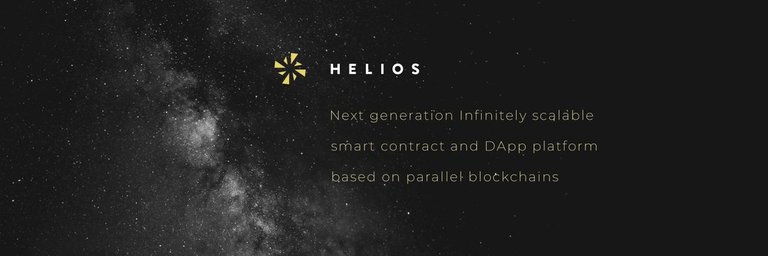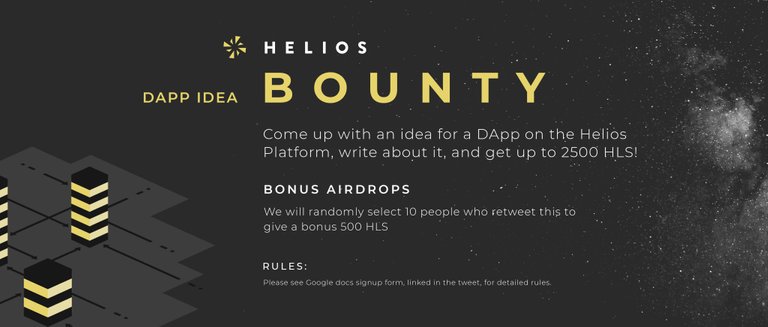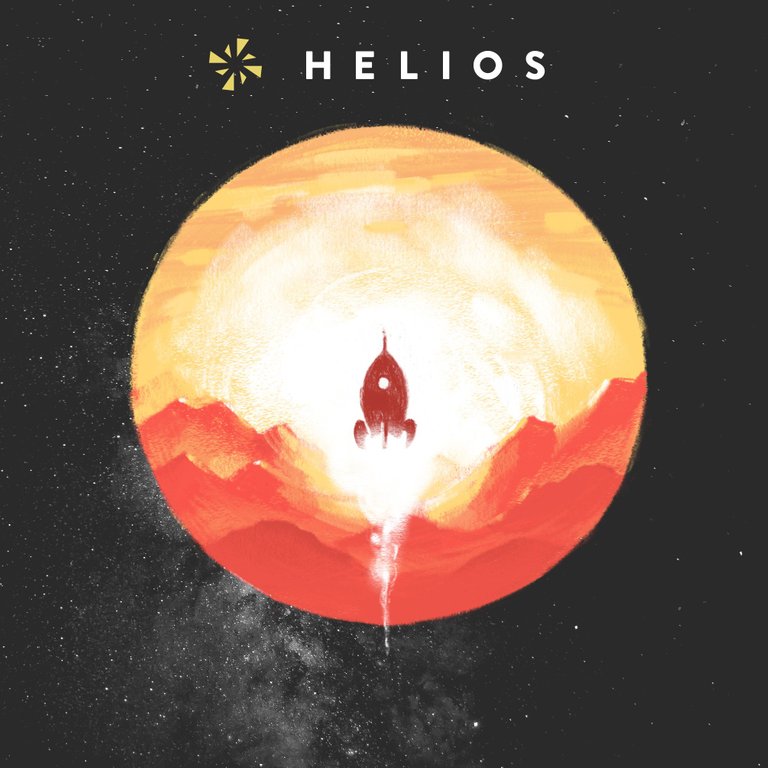
The Helios protocol has been developed from the ground up to solve the previously mentioned problems and achieve the following goals:
Maintain all of the positive qualities of modern blockchain implementations such as trustlessness, immutability, and decentralization.
Be capable of executing the same Turing complete programming languages as Ethereum.
This will allow Ethereum dApps to be migrated to the Helios dApp platform without modification which will dramatically accelerate the adoption.Be capable of scaling to handle the transaction volume of the future while maintaining low transaction latency.
Have low transaction fees and maintain them into the future.
Have a consensus mechanism that doesn't require proof of work (PoW) and uses orders of magnitude less energy while being just as secure. The consensus mechanism also needs to provide the same level of reliability and security as PoW and be highly resistant to centralization of power.
Allow the users to choose the order of their own transactions rather than the block miners, and allow them to add a transaction to the blockchain
exactly when they wish.

Protocol Overview
With traditional blockchain protocols there is a single main blockchain that must hold all of the transactions. However, each block can only hold so many transactions, and there must be a statistically set time interval between blocks. This results in a bottleneck where the blockchain is only being able to process a certain number of transactions per second. We decided to solve this problem by taking a serialized process and replace it with a parallel process. Instead of having a single blockchain, the Helios protocol has a blockchain for every single wallet address on the network. This is like taking a single lane highway and replacing it with a highway that has a lane for every single car on the road. This completely eliminates the bottleneck
caused by requiring all transactions to go onto the same blockchain. Every wallet on the network owns its own personal blockchain. Each blockchain is only allowed to contain transactions to or from the owner wallet. Each wallet is allowed to add new blocks with new transaction to their own blockchain whenever they wish. When a transaction takes place between two wallets, the transaction is only added to a block on the blockchain of the sender and receiver

Key Protocol Properties
Every wallet address has its own blockchain. Each blockchain contains a series of blocks. Each block contains one or more transactions.
When a transaction is placed, it is added to a new block at the top of the sender and receiver blockchains.
A wallet's blockchain can only contain transactions to or from that wallet.
Transaction and Block Creation Process
The block and transaction creation process for 3 wallets.
- The sender creates a signed transaction containing all required information.
- The sender adds the transaction to their local Queue Block. They can add as many transactions as they wish to their own queueblock. They can
also add incoming transactions. - The sender then completes the block at any time they choose by signing it and broadcasting it to the network.
- Eventually the new block is propagated across the network and the receiver sees the transaction.
- The receiver adds the transaction to their queue block, which can also be completed at any time
- The transaction is complete when it is present on the sender and receiver blockchains, and the blocks at each end have achieved consensus.
Unlike a traditional blockchain, since each blockchain belongs to a single wallet, we require that the blocks are signed just like the transactions. This adds a level of security that is not seen in normal PoW systems. Namely, if a transaction or block is changed, the signature will allow everyone to immediately know who is responsible. This will be explained in greater detail later in the paper.
Additionally, instead of having one transaction per block, we are allowing many transactions per block. This dramatically increases the transaction rate for an individual wallet that the protocol can handle because the wallet no longer needs to broadcast each transaction individually and wait for consensus between each one. Instead, the wallet can bundle all transactions into a normal block and broadcast them all at once.
Order of Transactions
Each transaction has 2 times associated with it: first is the time it was sent, and second is the time it was received.
These two times are defined by the block timestamp in the sender and receiver blocks, respectively. The time that the transaction completes is whichever of the two timestamps is latest. If a transaction is in the sender block but not the receiver block, then it is considered incomplete. In order to prevent double spending, the value of any incomplete transactions is subtracted from the spendable funds in a wallet.
Consensus Mechanism
Proof of stake (PoS) consensus mechanisms are very new and are still an active area of research. However, consensus mechanisms already exist in many different areas of nature, from the communication of bees in bee colonies, to the collective behavior of electron spins in a magnetic material. Many of these systems have withstood the test of time and have been continuously improved upon through evolution. Additionally, many of these systems have been studied extensively for hundreds of years and are very well understood. Thus, our approach to developing a consensus mechanism for the blockchain is to combine knowledge from all of the previ-ously done PoS research, with the solutions provided by consensus mechanisms in nature.
For more information about this project, feel free to make use of the links below. Thanks
Website: https://www.heliosprotocol.io
Whitepaper: http://heliosprotocol.io/files/HeliosTechnicalWhitepaperV0.1.pdf
Github Ethereum smart contract repo: https://github.com/Helios-Protocol/Ethereum-Smart-Contract
BitcoinTalk ANN: https://bitcointalk.org/index.php?topic=4317054.0
Twitter: https://twitter.com/HeliosPlatform
Telegram Chat: https://t.me/heliosprotocol
Telegram Announcement Channel: https://t.me/heliosprotocol
Discord Link: http://discord.gg/M6GH37P
Links to trade on EtherDelta and ForkDelta: http://heliosprotocol.io/#project-tabs-indicator-buy
Airdrop Form: https://docs.google.com/forms/d/e/1FAIpQLSdZ_lHOeeuaGLcl-cDs8BasmiahanKUVq20-fQlUF1BU2TmVw/viewform
Thanks for sharing, interesting airdrop!
After doing your own research, also finding good ICO projects can be profitable.
I want to share with you guys this new exciting project: RAWG.
Check out this new article where RAWG is mentioned as the "IMDB of gaming" on FORBES, one of the leading global media company, focused on business, investing, technology, entrepreneurship, and leadership.
https://www.forbes.com/sites/andrewrossow/2018/07/16/3-reasons-the-video-game-industry-is-bound-for-blockchain/#69da81c87810
The ICO will start in a short period, and they are at the moment in pre-ICO phase. This is the site: https://token.rawg.io/. It's a video game discovery platform that converts your skills into goods and services (the site is already working, with more than 57,000 games in the database).
Have a look and get some information while doing your own research :)
Another interesting point: RAWG has already secured $5m USD, halfway to hard cap of $10m!